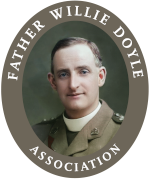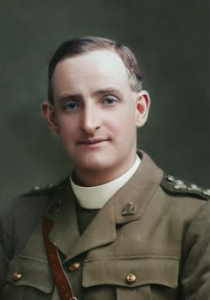Today we review some of Fr Doyle’s war narrative from early April 1916.
Taking a short-cut across to our lines I found myself in the first battlefield of Loos, the place where the French had made their attack. For some reason or other this part of the ground had not been cleared, and it remains more or less as it was on the morning of the fight. I had to pick my steps for numbers of unexploded shells, bombs and grenades lay all around. The ground was littered with broken rifles, torn uniform, packs, etc., just as the men had flung them aside, charging the German trenches. Almost the first thing I saw was a human head torn from the trunk, though there was no sign of the body. The soldiers had been buried on the spot as they fell; that is, if you can call burial, hastily throwing a few shovelfuls of clay on the corpses: there was little time, I fancy, for digging graves, and in war time there is not much thought or sentiment for the slain. As I walked along I wondered had they made certain each man was really dead. One poor fellow had been buried, surely, before breath had left his body, for there was every sign of a last struggle and one arm was thrust out from its shroud of clay. A large mound caught my eye. Four pairs of feet were sticking out, one a German, judging by his boots, and three Frenchmen – friend and foe are sleeping their long last sleep in peace together. They were decently covered compared with the next I saw; a handful of earth covered the wasted body, but the legs and arms and head were exposed to view. He seemed quite a young lad with fair, almost golden, hair. ‘An unknown soldier’ was all the rough wooden cross over him told me about him; but I thought of the sorrowing mother, far away, thinking of her boy who was ‘missing’, and hoping against hope that he might one day come back. Thank God, Heaven one day will reunite them both. I found a shovel near at hand and after a couple of hours’ stiff work was able to cover the bodies decently, so that on earth at least they may rest in peace.

